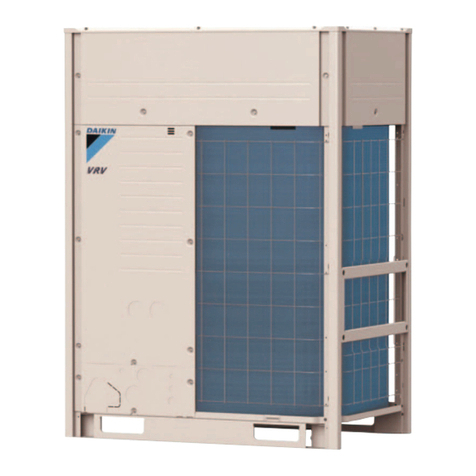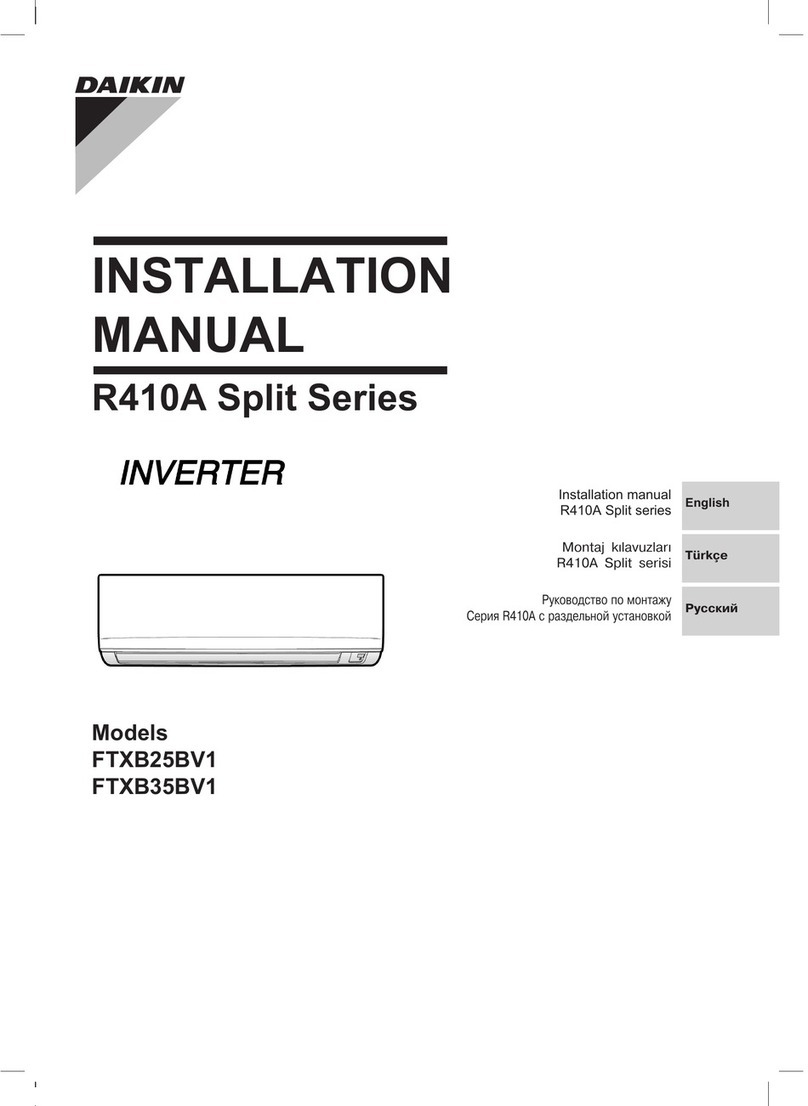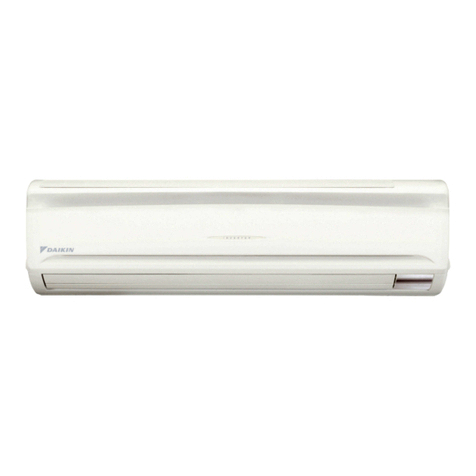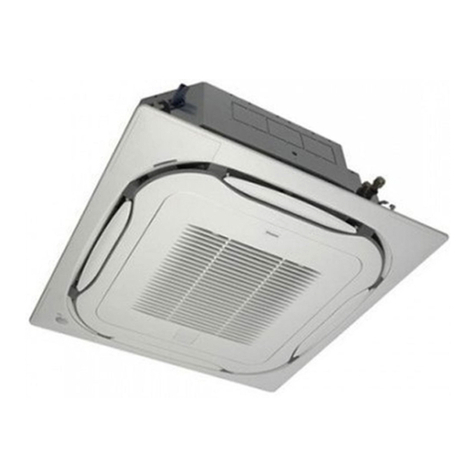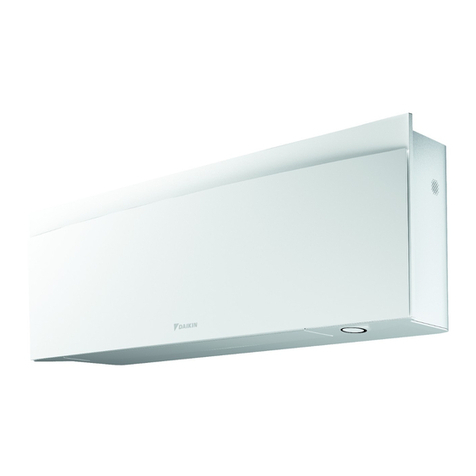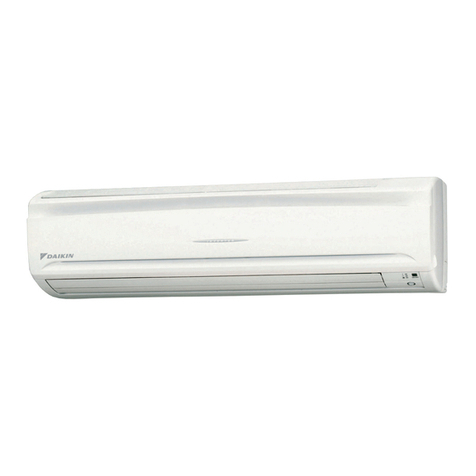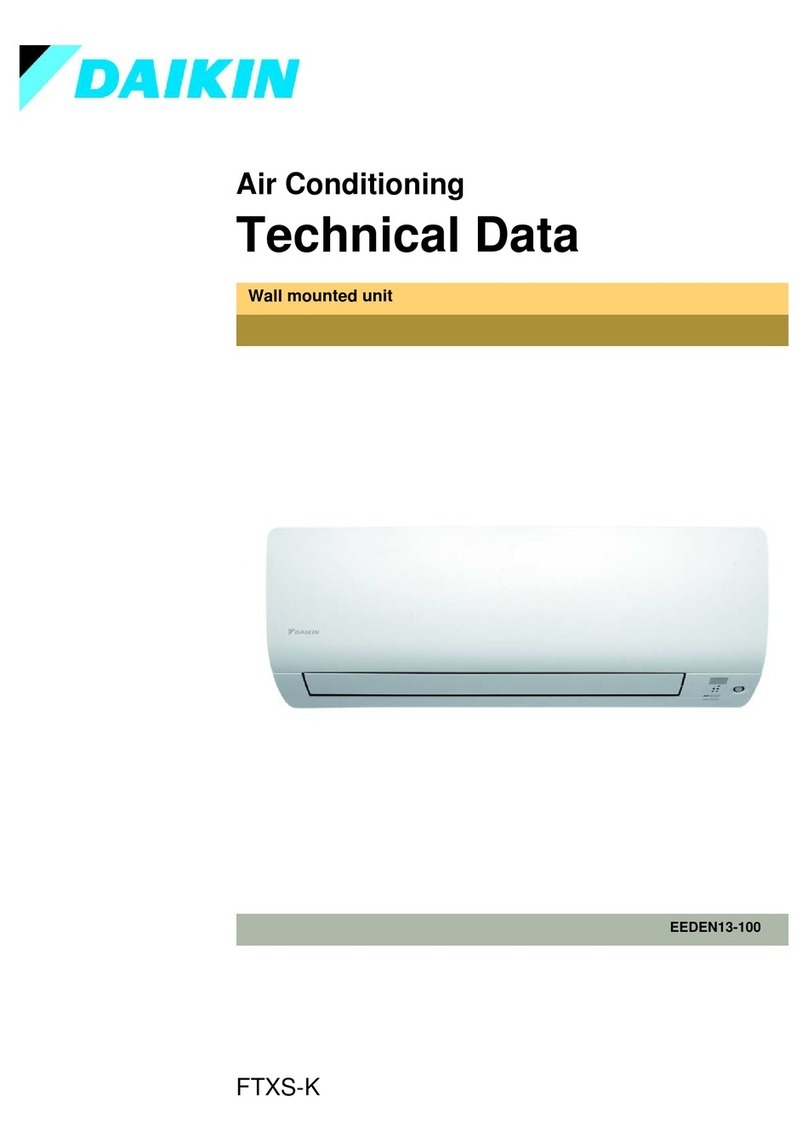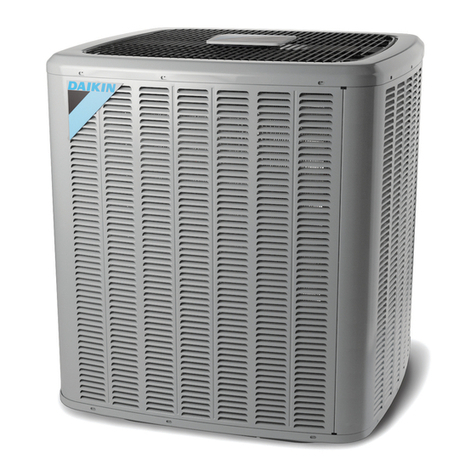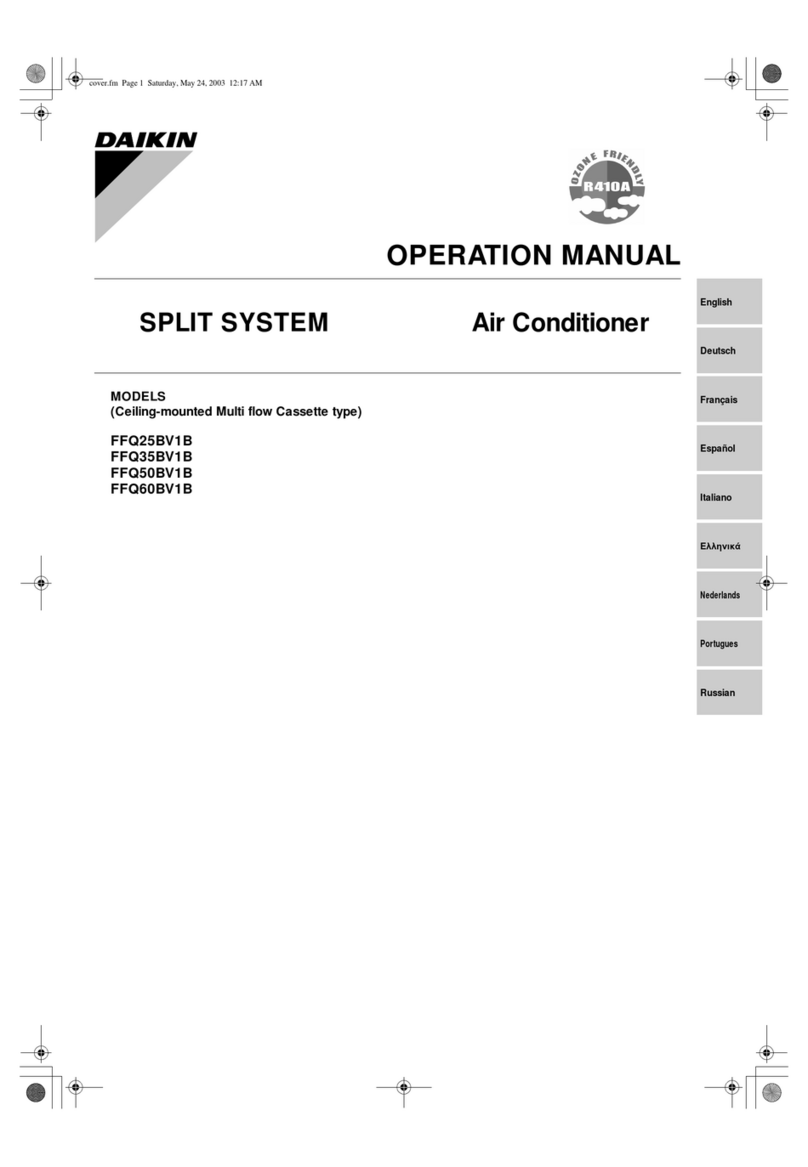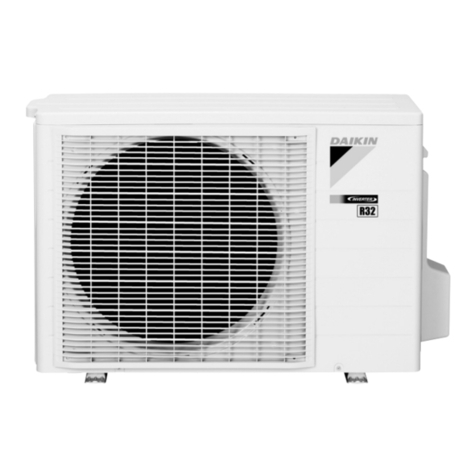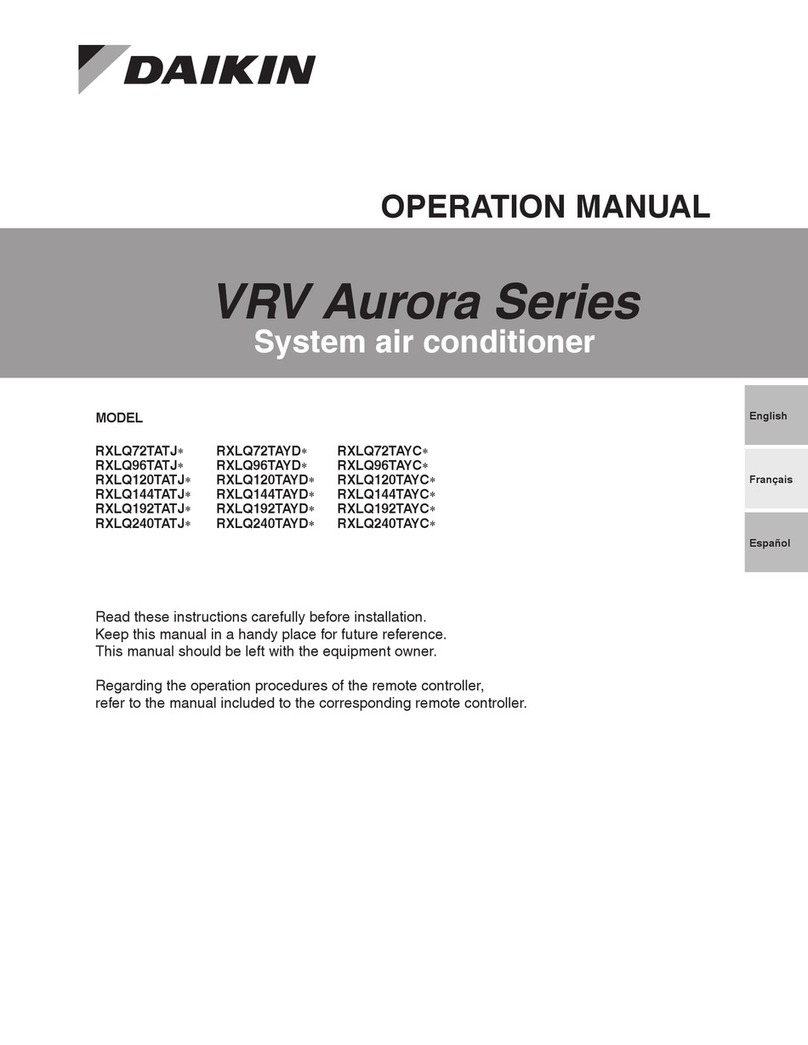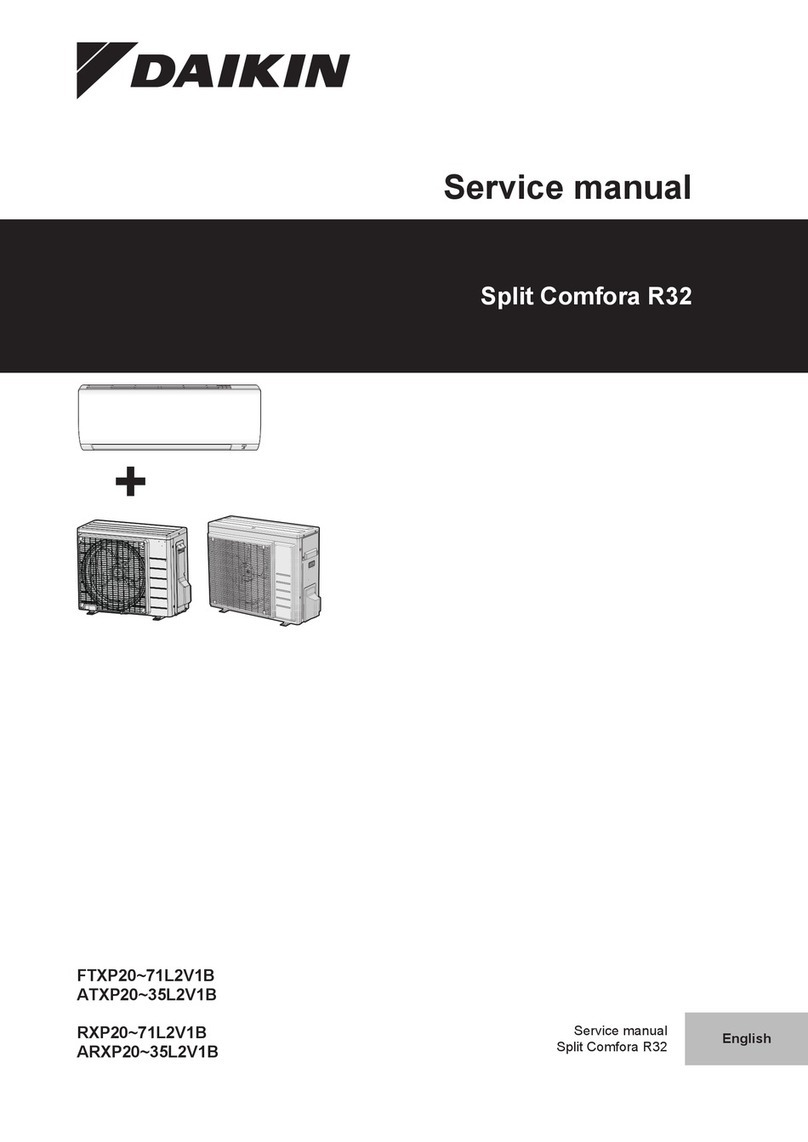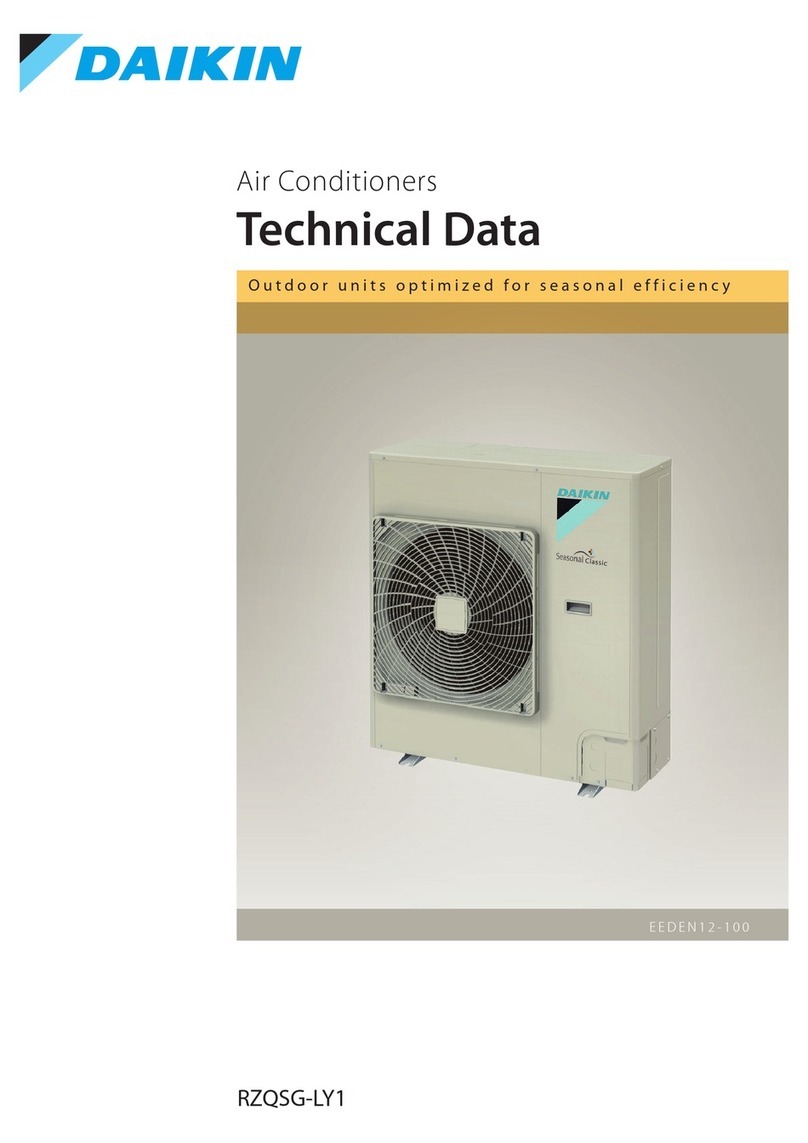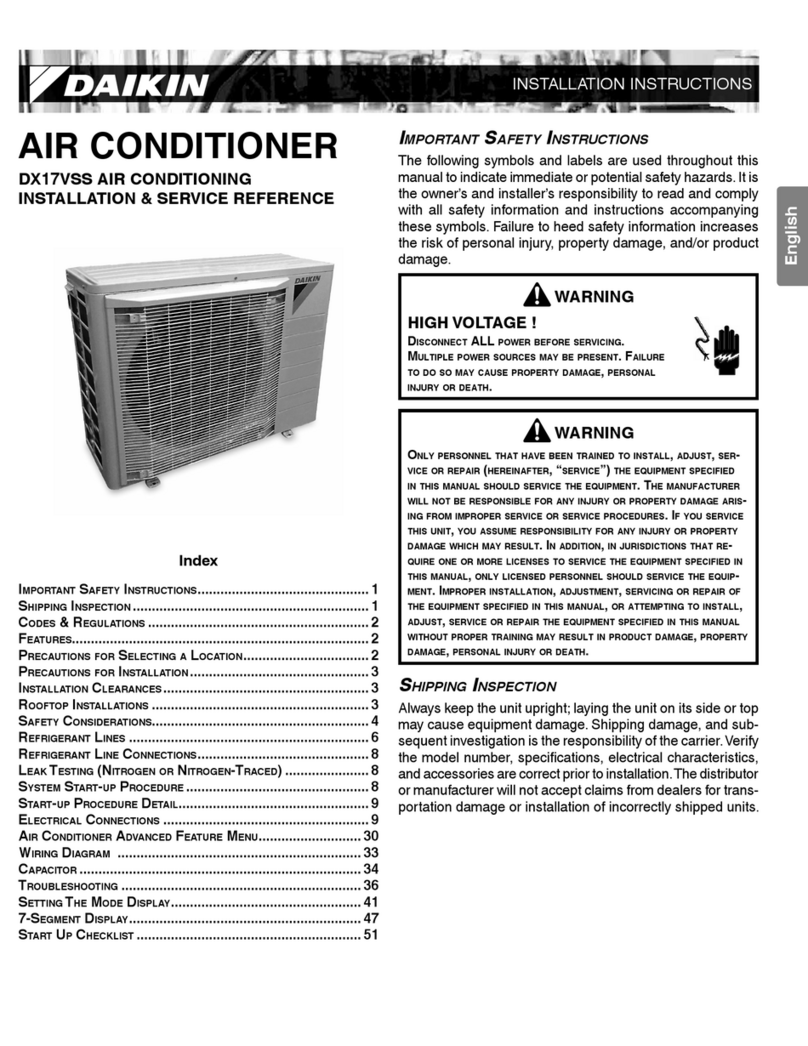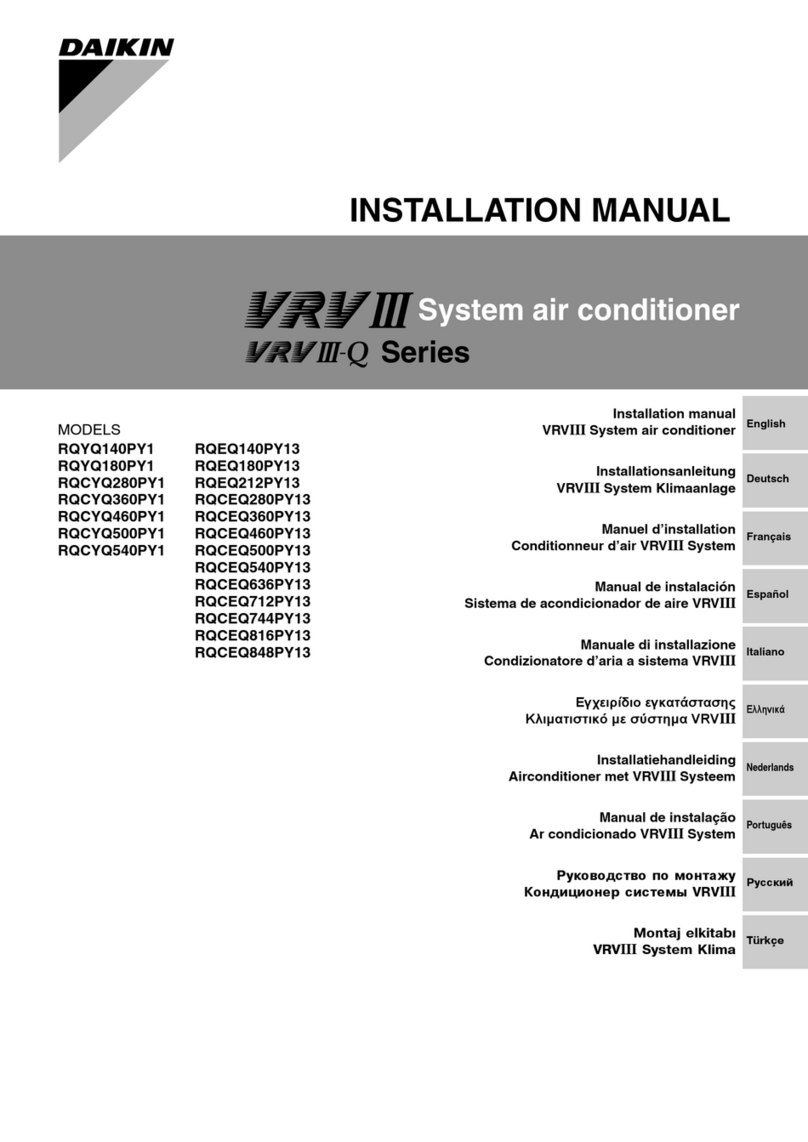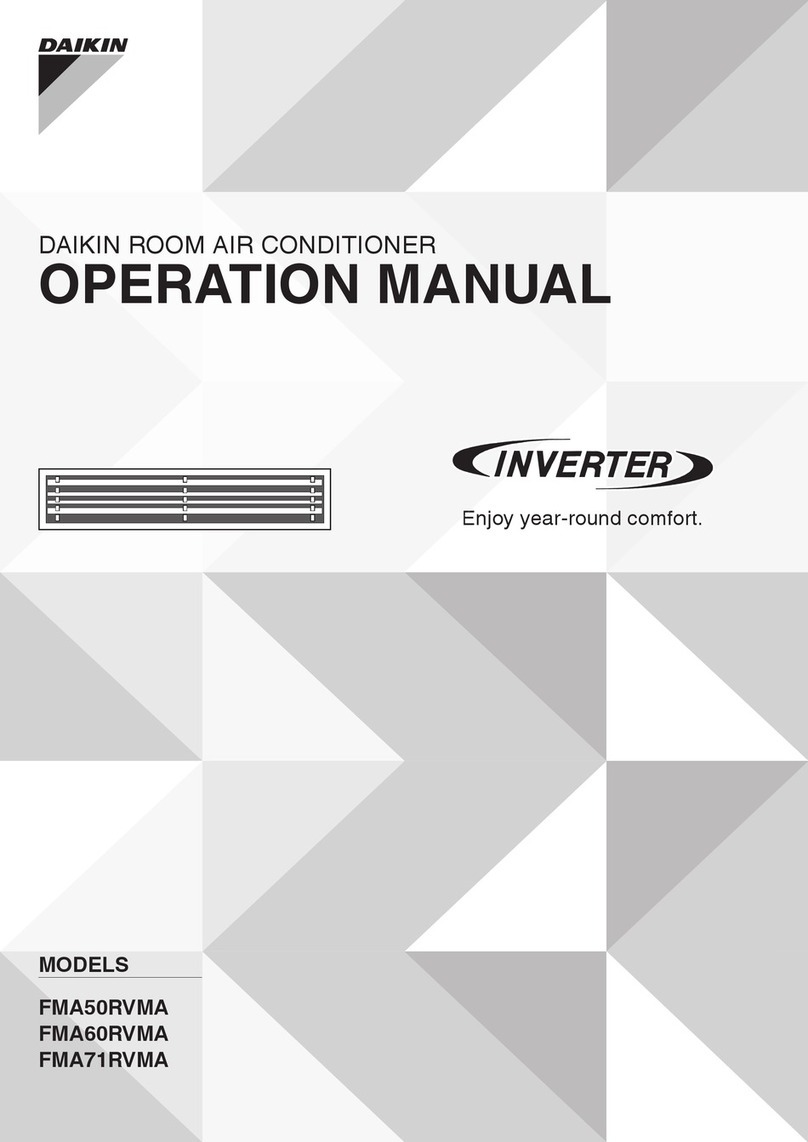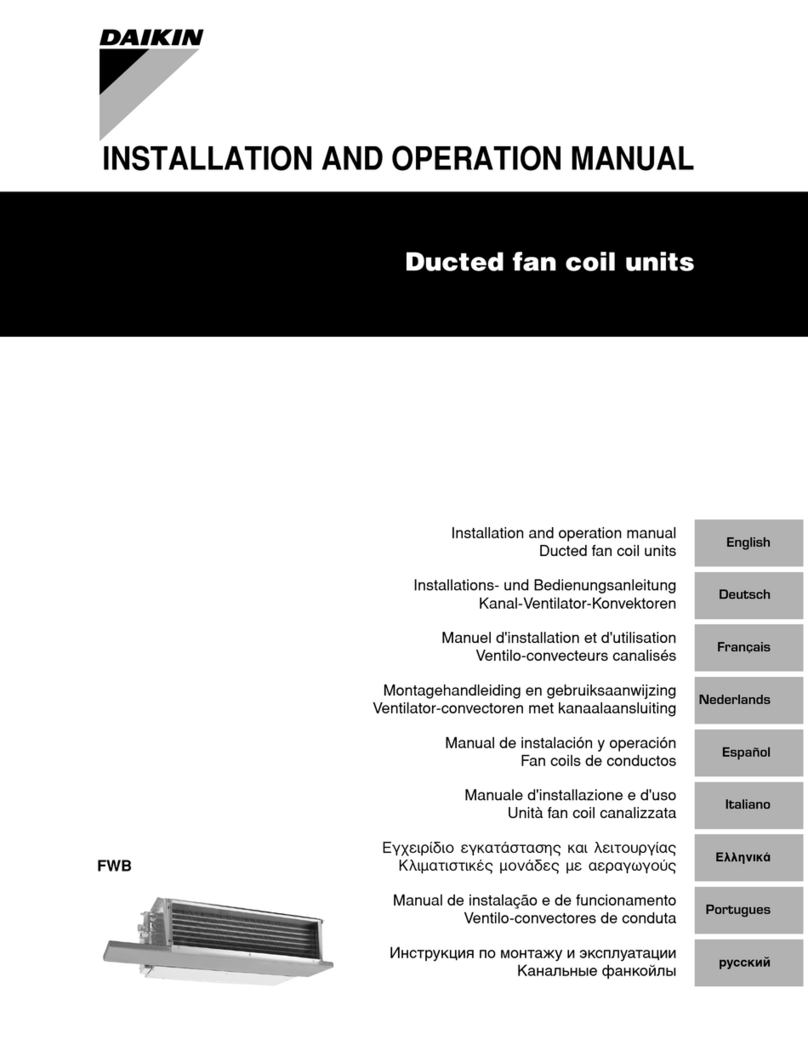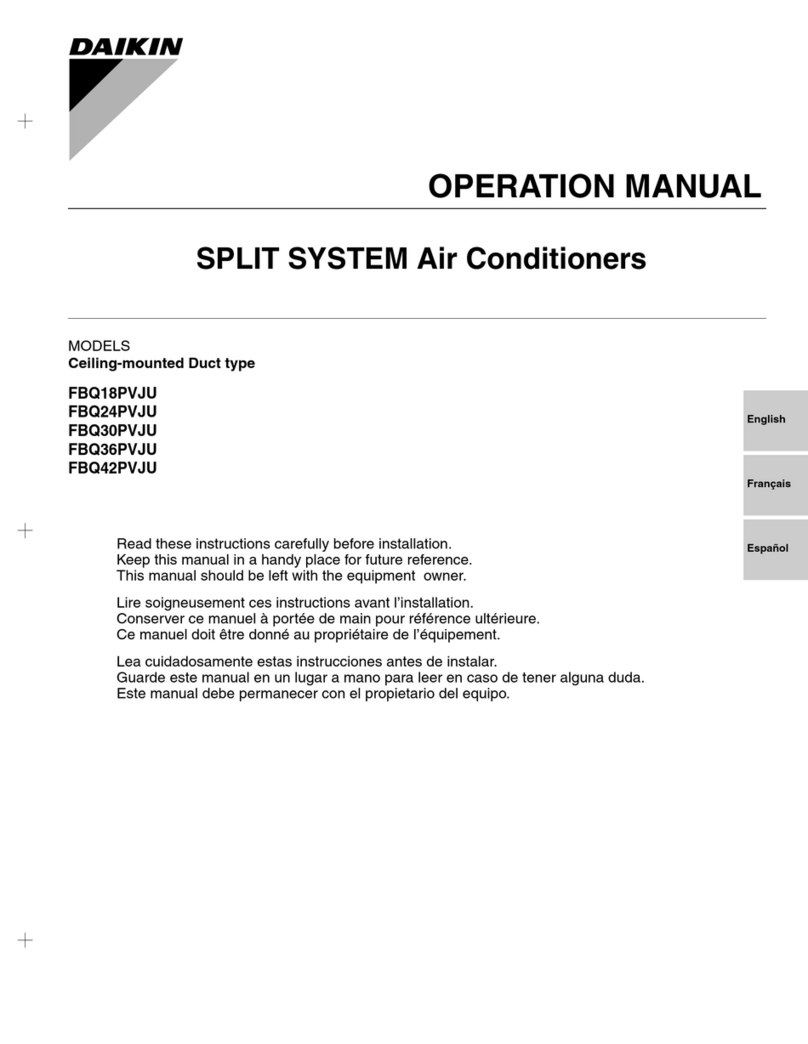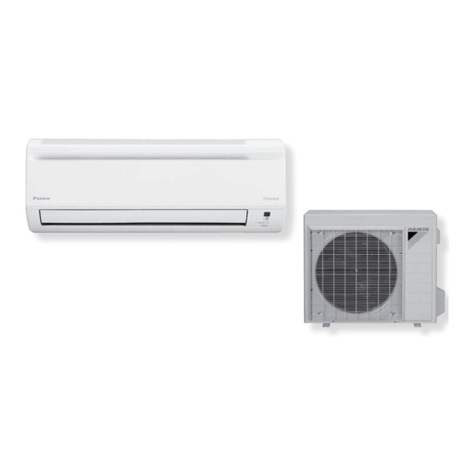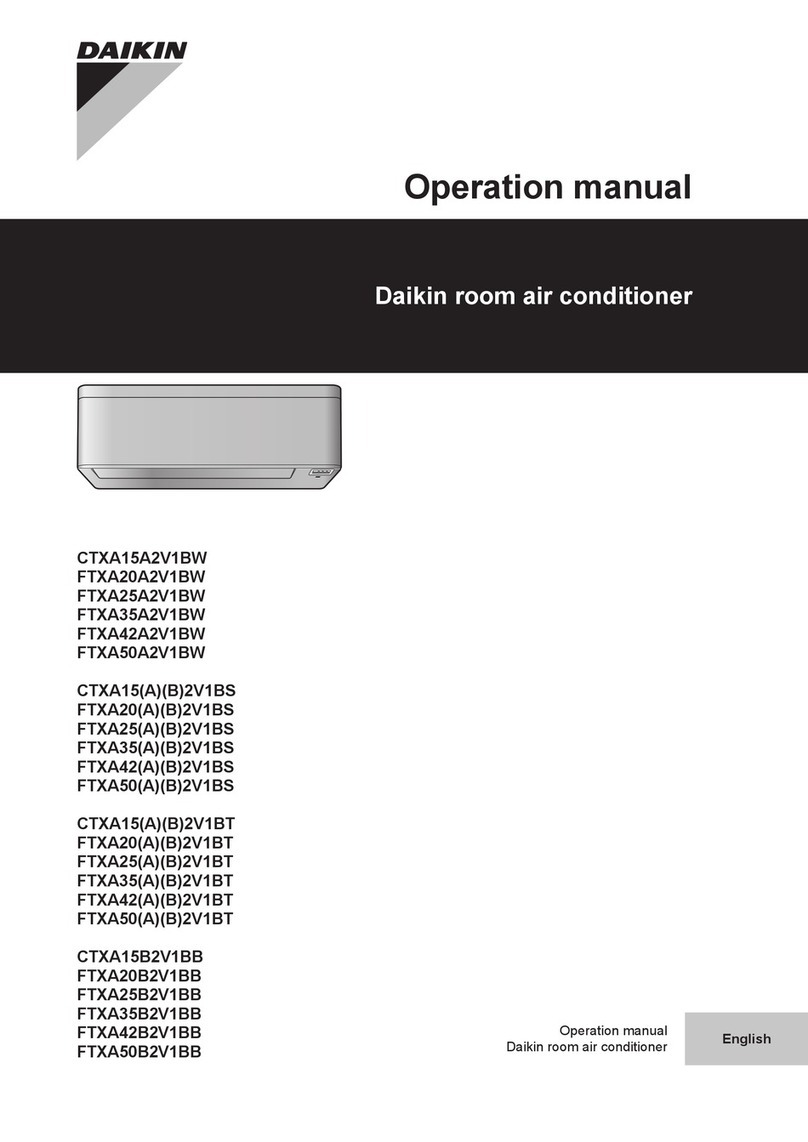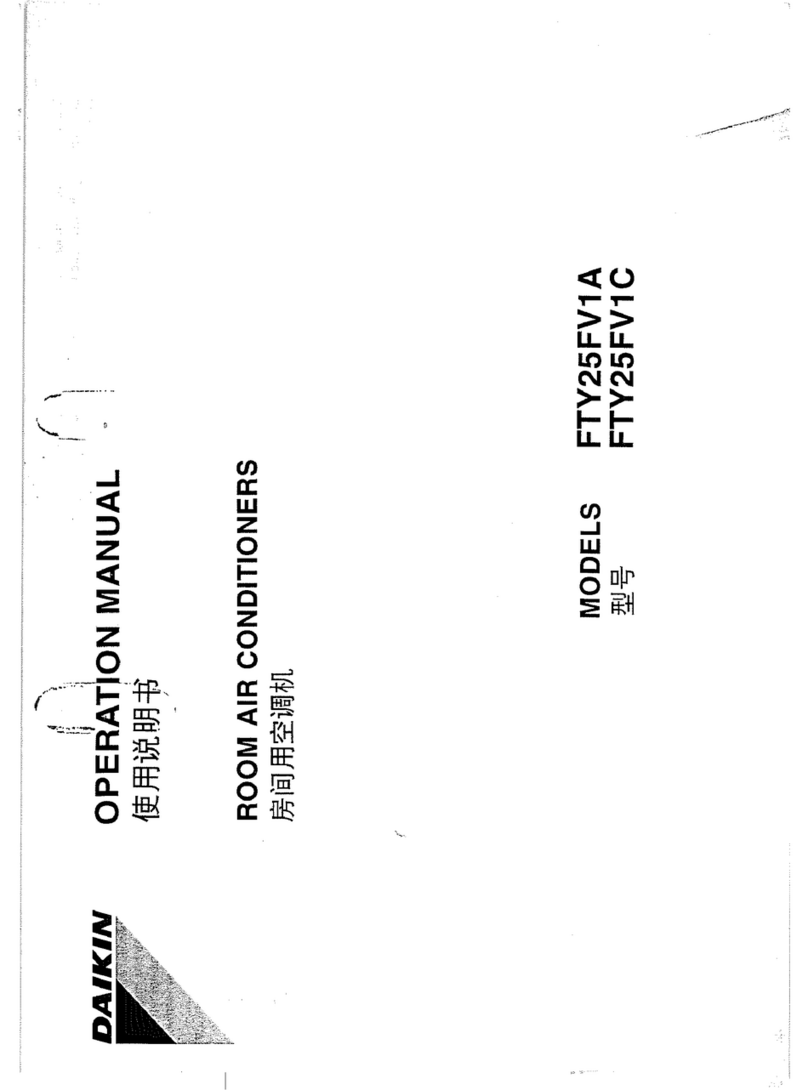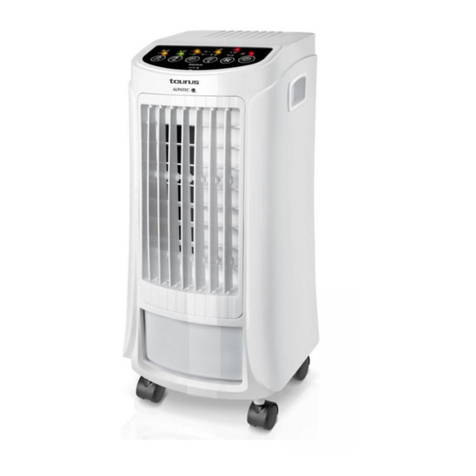
4
WARNING
• During pump down, stop the compressor before removing the refrigerant piping. If the compressor is still running and
stop valve is open during pump-down, air will be sucked in when the refrigerant piping is removed, causing abnormal
pressure in refrigeration cycle, which may result equipment damage and even injury.
• During installation, attach the refrigerant piping securely before running the compressor. If the refrigerant pipes are not attached
and the stop valve is open when compressor is running, air will be sucked in when the refrigerant piping is removed, causing
abnormal pressure in refrigeration cycle, which may result equipment damage and even injury.
• Be sure to earth the air conditioner.
Do not earth the unit to a utility pipe, lightning conductor or telephone earth lead. Imperfect earthing may result in
electric shocks.
• Be sure to install an earth leakage breaker. Failure to install an earth leakage breaker may result in electrical shocks, or fi r e .
• All electrical wiring must not touch the water piping or any moving parts of the fan motors.
• Confirm that the unit has been switched OFF before installing or servicing the unit.
• Disconnect from the main power supply before servicing the air conditioner unit.
• DO NOT pull out the power cord when the power is ON.
This may cause serious electrical shocks which may result in fire hazards.
• Keep the indoor and outdoor units, power cable and transmission wiring, at least 1m from TVs and radios, to prevent distorted
pictures and static.
Depending on the type and source of the electrical waves, static may be heard even when more than 1m away.
• Do not use means to accelerate the defrosting process (if applicable) or to clean, other than those recommended by the
manufacturer.
• The appliance must be stored in a room without continuously operating ignition sources (for example: open flames, an
operating gas appliance or an operating electric heater).
• Do not pierce or burn.
• Be aware that refrigerants may not contain an odour.
• The appliance must be installed, operated and stored in a room with a floor area larger than Xm2(refer to “Special Precaution
when dealing with R32 Unit”). In case it is not satisfy minimum floor area, it requires to install at good ventilation room.
• NOTE: The manufacturer may provide other suitable examples or may provide additional information about the refrigerant
odour.
CAUTION
• While following the instructions in this installation manual, install drain piping to ensure proper drainage and insulate piping to
prevent condensation. Improper drain piping may result in indoor water leakage and property damage.
• Tighten the flare nut according to specified method such as with a torque wrench. If the flare nut is too tight, it may crack after
prolonged use, causing refrigerant leakage.
• Do not overcharge the unit.
Overcharge will cause over-current or damage to the compressor.
• Ensure that the unit’s panel is closed after service or installation.
Unsecured panels will cause the unit to operate noisily.
• Sharp edges and coil surfaces are potential locations which may cause injury hazards.
Avoid from being in contact with these places.
• Before turning off the power supply set the remote controller’s ON/OFF switch to the “OFF” position to prevent the nuisance
tripping of the unit. If this is not done, the unit’s fans will start turning automatically when power resumes, posing a hazard to
service personnel or the user.
• Make sure to provide for adequate measure in order to prevent the outdoor unit be used as a shelter by small animals. Small
animal making contact with electrical parts can cause malfunctions, smoke or fire. Please instruct the customer to keep the
area around the unit clean.
• The temperature of refrigerant circuit will be high, please keep the inter-unit wiring away from copper pipes that are not
thermally insulated.
• Only qualified personnel can handle, fill, purge and dispose of the refrigerant.
• Do not install the air conditioner in places such as the following:
a. Where there is mist of oil, oil spray or vapour for example a kitchen. Resin parts may deteriorate, and cause them to fall out or
water to leak.
b. Where corrosive gas, such as sulfurous acid gas, is produced. Corrosion of copper pipings or brazed parts may cause the
refrigerant to leak.
c. Where there is machinery which emits electromagnetic waves. Electromagnetic waves may disturb the control system, and
cause malfunction of the equipment.
d. Where flammable gases may leak, where carbon fibre or ignitable dust is suspended in the air or where volatile flammables,
such as thinner or gasoline, are handled. If the gas should leak and remained around the air conditioner, it may cause ignition
and a fire to break out.
• Do not install in places filled with smoke, gas, chemicals, etc. There is a possibility that the sensors inside the indoor unit could
detect these and display a refrigerant leak abnormality (only for R32 refrigerant).
• This unit is equipped with a refrigerant leak detector for safety. To be effective, the unit must be electrically powered at all times
after installation, other than short service intervals (only for R32 refrigerant).
1-IMOM-FS-FVFC-RZFC-DAIKIN-EN.indd 61-IMOM-FS-FVFC-RZFC-DAIKIN-EN.indd 6 5/14/2020 5:54:00 PM5/14/2020 5:54:00 PM

